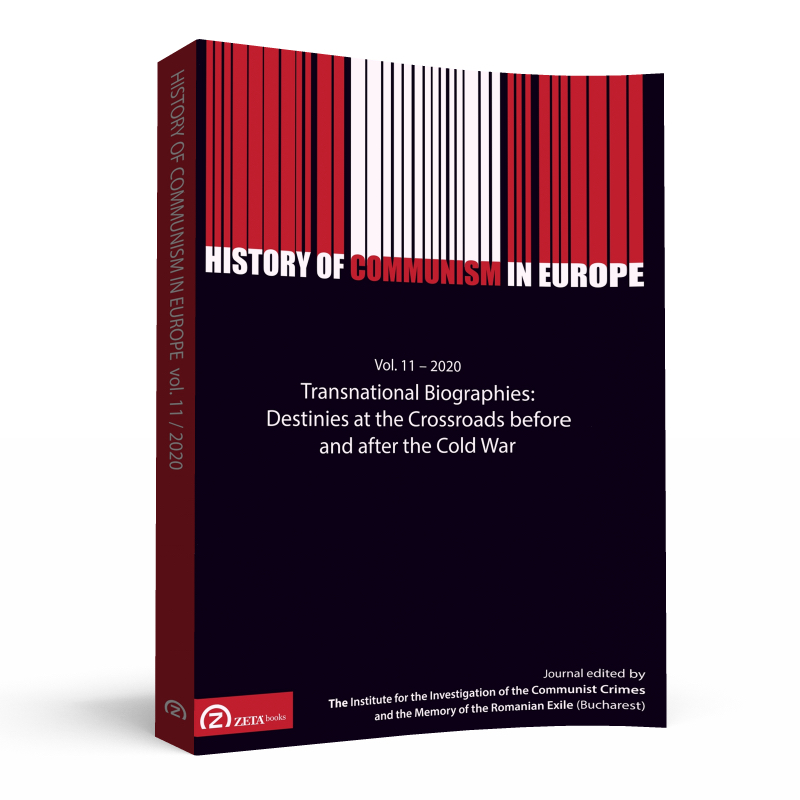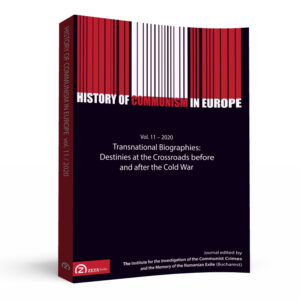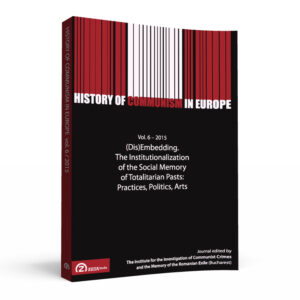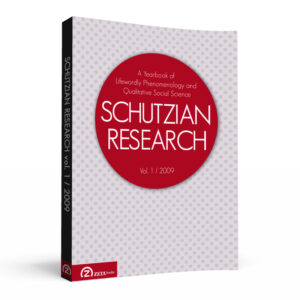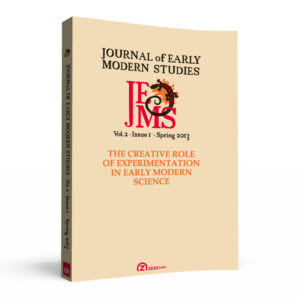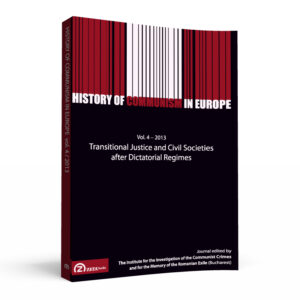History of Communism in Europe, vol. 11 / 2020. Transnational Biographies. Destinies at the Crossroads Before and After the Cold War
TABLE OF CONTENTS
ARGUMENT
Dalia BÁTHORY, Stefan BOSOMITU: Conceptualising Transnationalism through Life Histories
I. POLITICAL IDENTITIES – FROM REVOLUTIONARIES TO PARTY PERSONNEL
Arturo ZOFFMANN RODRIGUEZ: From Mexico to Moscow via Madrid: the Borodin Mission and the Origins of Communism in Mexico and Spain, 1919-1920
- Abstract: This article traces the steps of Mikhail Borodin, the first Comintern representative in Mexico and Spain, in 1919-20. He helped create the Mexican and the Spanish communist parties. In order to do this, he latched onto pre-existing networks of transnational activism and recruited a posse of young, committed, and cosmopolitan cadre. Through them, Borodin tried to mobilise the widespread euphoria for Bolshevism that existed among sectors of the Mexican and the Spanish left. However, the potential for vigorous communist movements remained largely untapped due to the recklessness of Borodin and his aides. The Borodin mission is a telling episode in the formative months of the Communist International, pointing to the importance of contingency, individual agency, and transnational activism in the establishment of the international communist movement.
Sandra NEUGÄRTNER: Anti-Fascist Exile, Political Print Media, and the Variable Tactics of the Communists in Mexico (1939–1946): The Case of Hannes Meyer and Lena Meyer-Bergner
- Abstract: This article deals with the role of the political print media popular with communists in Mexico when anti-fascism became the code for the behaviour of democratic forces in the face of the provocation of Hitler’s fascism. Under the facade of anti-fascist unity, the German-speaking communist exiles established a publishing culture, from which Hannes Meyer and Lena Meyer-Bergner, who had come to Mexico from Soviet exile and who committed themselves to proletarian internationalism, soon separated or were excluded. Independent of the group, they developed strategies in accordance with their anti-imperialist mission, from propaganda media for the Soviet state to the implementation of a sign language that would enable communication across borders: the International System of Typographic Picture Education (Isotype). The goal of my analysis is to provide a starting point for classifying Meyer and Meyer-Bergner’s work in print media, beyond the extensively researched Taller de Gráfica Popular context, but within the polarization of international opposition to fascism and totalitarian regimes during the Second World War.
Anna TONELLI: Teresa Noce: an Italian Professional Revolutionary Woman
- Abstract: The role of professional revolutionaries is usually reserved for men. One exception is Teresa Noce, a prominent Italian Communist leader in the (residual) quota reserved for women, who was the wife of Luigi Longo, but with an independence that made her existence an original example of militancy and activism. Both underground and within republican Italy, Noce never adapted to what already existed, but fought to subvert the order, especially in the face of exploitation and discrimination. A member of the ICP, Noce fought against fascism, transporting clandestine material, writing articles for anti-fascist papers, promoting strikes by rice weeders and labourers. In France, she directed partisan movements and, in Spain, she was a militant in voluntary groups against Francisco Franco. After the war, she was elected to the Parliament as a “Constituent Mother”. She also revolutionised the world of labour as the first female Secretary General of the textile trade union.
Stefan BOSOMITU: The Permanent Suspicion. The Romanian Communist Party and its International Cadres
- Abstract: This article attempts to explore the relations between the Romanian Communist Party and its “international” cadres after the end of the Second World War and its accession to power. Beyond a simply descriptive exegesis, the present study tries to capture the evolution of those relationships, and especially how the power relations between the two entities unfolded in the context of a paradigm shift: the legalisation of the party, its transformation into an important force of the political scene and, finally, its accession to power. Those transformations imposed a structural reorganisation of the movement, forced to centralise its entire diffuse network of activists, many of them spread across Europe. After 1945, the Communist Party pursued a consistent policy of repatriating activists, whether they were in the Soviet Union or in Western European countries. But, as we will detail later, the party sought to control that infusion of “qualified personnel” through strict selection and nominal repatriation. Similar efforts were made to control and subordinate this political corpus of “internationals” to a party leadership that did not have flawless legitimacy. Within and as a result of those tangled interactions, complex relationships would emerge and develop between individuals and groups who disputed an informal primacy and whose claimed legitimacy had distinct origins and evolutions.
Cristian VASILE: Mihail Ralea between the Ministry of Arts and the Romanian Communist Cultural Diplomacy
- Abstract: Mihai Ralea was a university professor and prominent representative of the Romanian interwar literary intelligentsia. M. Ralea taught psychology, sociology and aesthetics, and was at the same time the director of a reputed literary magazine (Viaţa românească- Romanian Life). Ralea was also a politician, initially an important member of the National Peasant Party, representing its centre left wing. In his case, one may notice the contradiction between his moral arguments in public and his deeds after he reached positions of power (Minister of Labour under the royal dictatorship, Minister of Arts under the pro-communist Petru Groza government, etc.). Ralea was also called “the moralist without morals”, and the compromises he made – manifested through his adherence to anti-democratic regimes – can be documented by numerous archival documents. Due to strong political connections, Ralea survived in the high ranks of cultural bureaucracy even during cultural Stalinism. He maintained important positions both at the University of Bucharest and with humanities research institutes of the post-1948 Soviet-style Romanian Academy of Sciences. In the late 1950s and early 1960s, he also gained positions of international cultural representation with the Romanian branch of the United Nations Educational, Scientific and Cultural Organisation (UNESCO) and the Romanian Institute for the Cultural Relations with Foreign Countries (IRRCS, the Romanian VOKS). His survival (as a professor of psychology after 1948) had a significant price – Ralea’s collaboration with the Stalinist regime. Using open sources and also newly declassified archival documents, the article is an attempt to approach M. Ralea’s case of survival in the high cultural bureaucracy of the East European context.
II. BIOGRAPHIES BEYOND BORDERS
Valeska BOPP-FILIMONOV: ‘A New Era’ is always Dawning. A Linguistic Biography of a Border Crosser and Doppelgänger from Bukovina in the Second Half of the 20th Century
- Abstract: This article argues that it was not only physical borders that challenged people’s biographies in the 20th century, but also shifts in ideology, discourse and predominant languages. I shall explore the biography of a man called Cornel, a native of Bukovina who was a communist cultural official in Romania’s capital Bucharest in the 1960s and who became a priest in the 1970s. I shall show that not only obvious breaks such as the beginning and end of communist rule, but ideological shifts too within Romanian communism prompted Cornel to thoroughly reassess himself. For Cornel, it was the ‘mini-cultural revolution’ of 1971 under the rule of Nicolae Ceaușescu that quickly convinced him to leave his job at the Romanian Ministry of Culture and reinvent himself as an Orthodox priest. But was his self-reinvention successful? A thorough analysis of his biography shows that his linguistic biography—oscillating between Romanian, Ukrainian and Russian—contains crucial elements of productive adaptation and continuity that enabled him repeatedly and successfully to circumvent borders imposed by newly emerging policies. His “third” identity as a writer has given him continuity and self-assurance.
Lucie LAMY: Defining ‘Baltic Germanness’ in Post-Soviet Latvia and Estonia: Ethnic Germans’ Life Stories between East and West
- Abstract: This article, based on interviews conducted in 2019 with Latvian and Estonian citizens ethnically defining themselves as “Baltic Germans”, aims to analyse the way this self-identification is shaped by the experience of the Soviet and post-Soviet periods, and by the ideological polarisation between East and West. Studying this hybrid ethnic belonging allows taking a look at individual life paths through a transnational lens and paying attention to all forms of mobility that play a role in its construction. By integrating the interviewees’ migratory experience, their discourses on other ethnic groups, and their perception of Germany, Latvia, Estonia, Russia and the USSR, this article intends to apprehend “Baltic Germanness” as a transnationally and trans-ethnically shaped category, to which the interviewees resort in order to make sense of their lives outside the framework of the nation-state.
III. TRANSNATIONALISM REPRESENTED
Enis SULSTAROVA: An Albanian Hemingway: Petro Marko’s Recollections of the Spanish Civil War
- Abstract: Petro Marko (1913-1991) was an Albanian journalist, writer and communist activist, who volunteered in the International Brigades during the Spanish Civil War. Afterwards, he was imprisoned in the island of Ustica by the Italian occupiers of Albania during the Second World War and was briefly imprisoned by the communist regime of Albania in the late 1940s. Afterwards he worked as a journalist and a writer, being closely surveyed by the communist regime. The Spanish experience was the most important formative period throughout Marko’s stormy life, through which he was able to stay faithful to his communist and internationalist beliefs in the face of fascism and one of the most totalitarian and isolationist regimes in Europe. Marko wrote about the International Brigades in his most prominent novel, Hasta la Vista, and in his posthumously published autobiography. This paper will investigate these works by putting them in the historical context of the events themselves and of the time of the writing process. The aim is to look into how internationalism moulded his own identity, but also how this ideal was presented publicly under a communist regime that was becoming more and more isolated and xenophobic.
Ana THEODORESCU: Theodor Vasilescu – The Dancer Who Took the Romanian Folklore all over the World
- Abstract: The main theme of the proposed paper concerns the professional training and artistic activity of Theodor Vasilescu, choreographer and dancer, specialized in folk dance, with a rich international activity during the communist regime. The analysis will focus on illustrating how the artist’s biography was influenced by a new trend in the satellite states of the U.R.S.S., namely that of transforming traditional dance into art with a political substratum. Also, the main thread of the article will consist in revealing the specific type of relationship between the artist and the regime, dominated by a permanent awareness of the mutual benefits of this partnership: for the dancer Theodor Vasilescu it was the chance to develop a successful career, which for the propaganda apparatus implied a strong image campaign for Romania, abroad. Regarding the temporal framework, the analyzed period will focus on the regime of Nicolae Ceaușescu, 1965-1989, relevant in Theodor Vasilescu’s career path, as well as in the dissemination of his work results. There are three important aspects that will be analyzed in this article: first, the recovery of an important cultural trend in Romanian history, when, through the influence on the Soviet chain, folklore and traditional dance became an art form strongly subsumed to an ideology. This aspect led to the foundation of many Folk Ensembles with a specific type of artistic manifestations, including folk dance. At the same time, it will be illustrated how the regime was involved in financing and promoting this type of dance, by including it in the development of the most important national performances, by encouraging research in this field and creating professional opportunities through training and also by organizing an International Folklore Festival, “Romania 69”. This approach definitively changed the professional career of Theodor Vasilescu. The last aspect consists in presenting the international career of the choreographer, as a direct result of the increased interest that the communist regime had in promoting Romania’s image abroad. This made the Romanian folk dance very popular in countries such as Netherlands, Japan, Canada, Germany. Also, the frequent tournaments contributed to the increase of the Securitate‘s interest in his daily activity. The main categories of sources for documentation will consist of: my personal archive which contains two interviews with Theodor Vasilescu, documents in the funds and collections of the National Archives of Romania (The Central Committee of the Romanian Communist Party, Propaganda and Agitation Section, Organizational Section), also those of the National Council for Studying the Securitate Archives.
Ana-Cristina IRIAN, Valentin MAIER: Picturing the West – A Slideshow of a Private Production in Communist Romania
- Abstract: The purpose of this paper is to present and analyse the biography of a passionate 20th century Romanian tourist who lived in Bucharest and travelled across Europe, bringing his (subjective) travel experiences of Western countries to private and public audiences curious about the unknown “abroad” during the 1980s. This case study is about the life and travel experiences of Vasile A. Marinescu, and deals with their visibility and interpretation during the communist era. The research is based on unpublished sources – visual and audio sources, as well as manuscripts (between 1970 and 1980), interviews – and other already published archive materials. The research describes, in particular, how the West was perceived and presented in those semi-private shows, and how (and which of) those unofficial sources influenced the imagination of Romanians, aside the official propaganda.
BOOK REVIEW
Manuela MARIN: Sean Eady, Four Color Communism: Comic Books and Contested Power in the German Democratic Republic (Berghahn Books, 2021)
ISSN 2069-3192 (paperback)
ISSN 2069-3206 (electronic)

